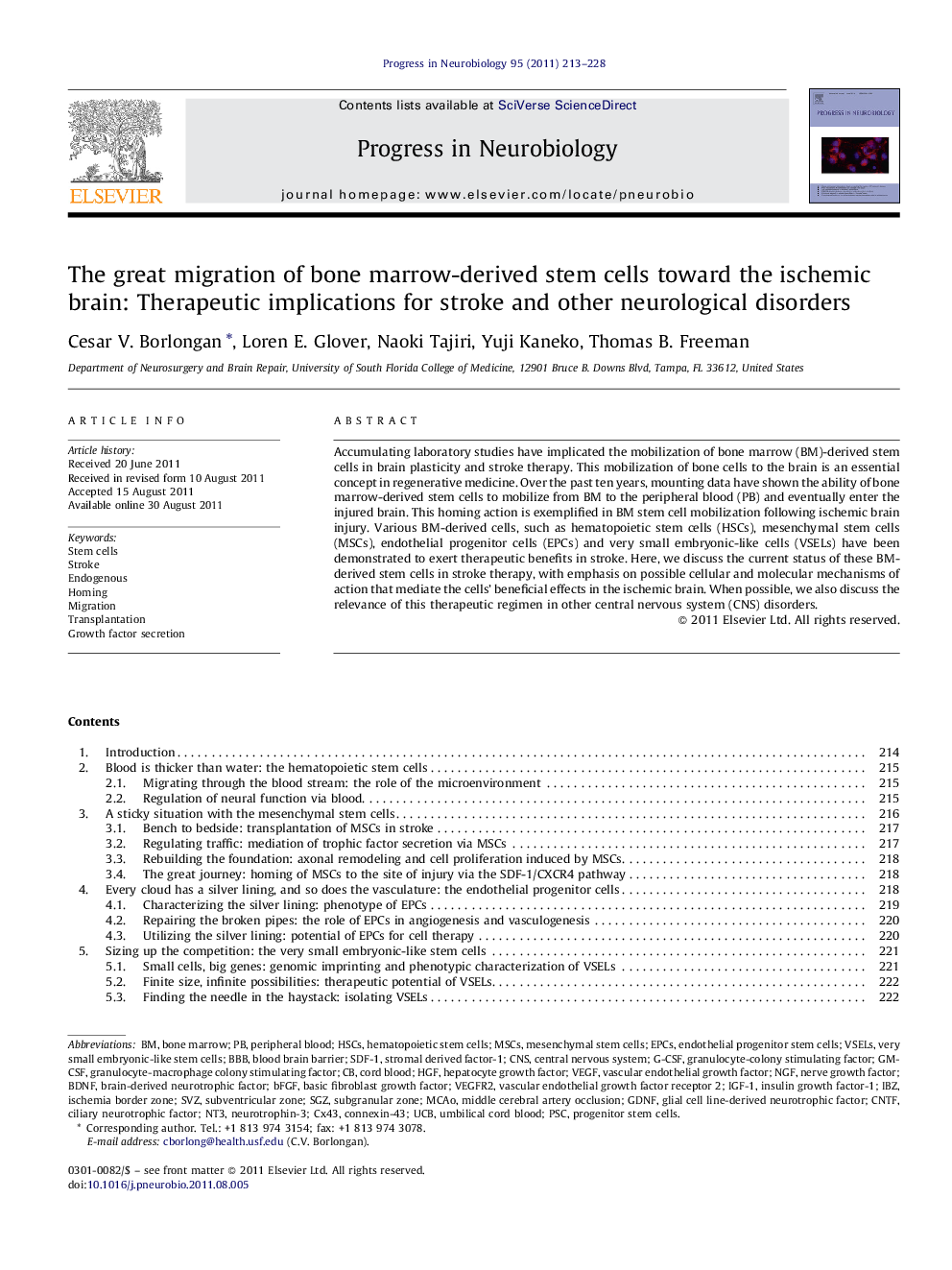| Article ID | Journal | Published Year | Pages | File Type |
|---|---|---|---|---|
| 4353535 | Progress in Neurobiology | 2011 | 16 Pages |
Accumulating laboratory studies have implicated the mobilization of bone marrow (BM)-derived stem cells in brain plasticity and stroke therapy. This mobilization of bone cells to the brain is an essential concept in regenerative medicine. Over the past ten years, mounting data have shown the ability of bone marrow-derived stem cells to mobilize from BM to the peripheral blood (PB) and eventually enter the injured brain. This homing action is exemplified in BM stem cell mobilization following ischemic brain injury. Various BM-derived cells, such as hematopoietic stem cells (HSCs), mesenchymal stem cells (MSCs), endothelial progenitor cells (EPCs) and very small embryonic-like cells (VSELs) have been demonstrated to exert therapeutic benefits in stroke. Here, we discuss the current status of these BM-derived stem cells in stroke therapy, with emphasis on possible cellular and molecular mechanisms of action that mediate the cells’ beneficial effects in the ischemic brain. When possible, we also discuss the relevance of this therapeutic regimen in other central nervous system (CNS) disorders.
► Bone marrow-derived hematopoietic and non-hematopoietic stem cells are an attractive transplantable cell source for stroke. ► Bone marrow-derived stem cells most likely exert their benefits via the bystander effect, not transdifferentiation. ► Bone marrow-derived stem cells are mobilized from the bone marrow and home to the ischemic brain. ► Molecular signaling pathways and host cellular microenvironment guide bone marrow-derived stem cell migration in stroke.
